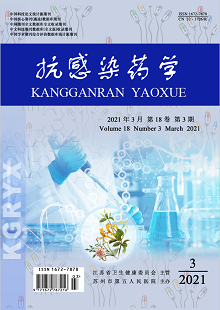ZHANG Xia-lan, SHEN Xi-kun, HUANG Yu-yu, WU Bin, SONG Ru-jun
Objective: To analyze the rationality of clinical adjuvant drugs for liver protection in tumor patients with abnormal liver function. Methods: Patients diagnosed as tumors admitted to the Department of Oncology of the hospital from January 2017 to December 2019 were selected. In addition, the clinical data of 197 hospitalized patients with liver function abnormalities caused by anti-tumor drugs were collected, and the gender, age, smoking and drinking history, basic liver diseases, biochemical indicators of liver function, clinical manifestations, use, cost and prognosis of liver-protecting drugs were calculated to analyze the rationality of the usage of liver-protecting drugs. Results: Among the 197 tumor patients diagnosed with abnormal liver function, 40.61% had a history of liver disease, 12.18% had a history of adverse drug reactions, and 32.49% had a history of alcohol consumption.Drug-induced liver injury and hepatobiliary tumors were the main causes of liver function injury.Levels of liver injury (Ⅰ or Ⅱ), use one kind of the prognosis of liver drug effect was the best; Ⅲ level or Ⅳ level, two or three kinds of drugs used in combination, protect liver prognostic effect was the best;The results showed that some of the liver-protecting drugs in doctors' orders were found to have repeated use of drugs, improper indications, improper combination of drugs, contraindications and unreasonable usage and dosage. Conclusion: Tumor patients with abnormal liver function caused by anti-tumor drugs, were reasonable selection of hepatoprotective drugs adjuvant therapy, and based on its condition and liver injury type of rational use of liver-protective drugs, in combined drug use no more than 3 kinds of drugs should be used.
